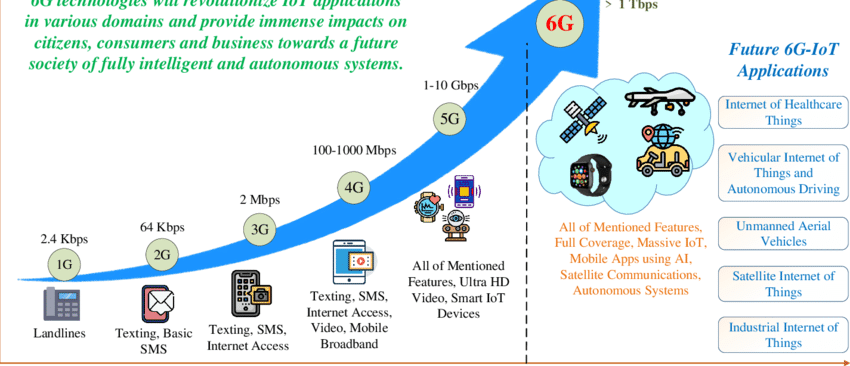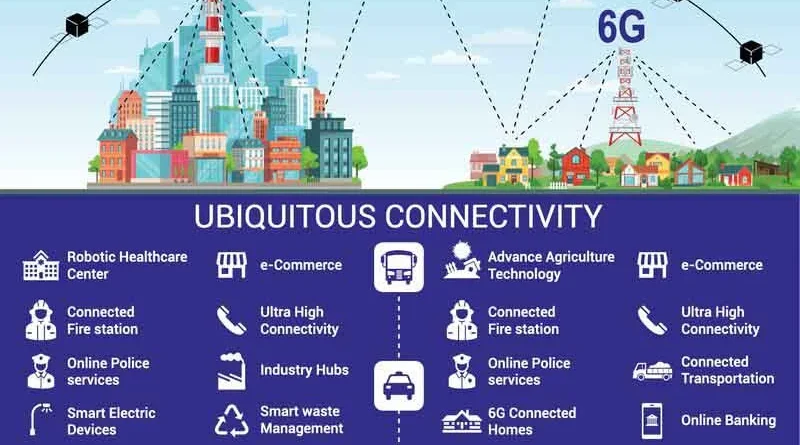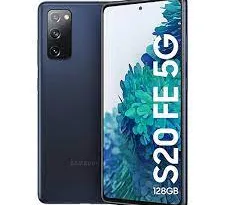6G Wireless Device 24
6G wireless device
A 6G wireless device represents the highest level of technological development, offering data speeds that are significantly higher than those of its predecessors. 6G devices have the ability to completely transform a variety of industries, including healthcare and entertainment, by enabling seamless automation in smart cities, real-time remote surgeries, and immersive virtual reality experiences. With predicted speeds of up to terabits per second.
Furthermore, 6G devices’ possibilities go much beyond just speed. They are ideally positioned to leverage the potential of AI and ML to enhance network efficiency, adjust to changing external circumstances, and customize user experiences in unprecedented ways.

What is a 6G wireless device?
In the field of telecommunications, the introduction of a 6G wireless gadget that can send data at an incredible 100 gigabits per second (Gbps) represents a significant advancement. This discovery in wireless technology is the result of a collaborative effort between a group of prestigious Japanese corporations, including DOCOMO, NTT, NEC, and Fujitsu.
Follow our Digiknowledge.co.in page for the latest updates about technology, bikes, cars, sports, lifestyle, and many more.
In context, this accomplishment should be seen as a seismic shift, as the 100 Gbps transmission rate outpaces existing 5G speeds by a whopping 20 times and eclipses them by an astounding 500 times. It is not just a small improvement over 5G. With such unheard-of data rates, networking promises to be redefined, and new opportunities for both consumers and industries will be unlocked.
The potential of 6G to essentially do away with lags, disconnections, and buffering globally is one of its most exciting features. 6G networks will provide smooth and instantaneous connectivity, guaranteeing a seamless and uninterrupted user experience across a multitude of applications and devices by utilizing previously unheard-of data speeds and ultra-low latency.
In which industries does a 6G wireless device play a vital role?
The possible uses are almost endless at these kinds of speeds. Healthcare, education, entertainment, and other industries will all be impacted by the possibilities that come with real-time, high-definition virtual reality experiences and instantaneous data transfers for mission-critical processes.
Also, the combined endeavor of these titans of industry highlights their shared dedication to exceeding current limits. They have expressed a common vision of a future in which technology innovation acts as a catalyst for progress and where connectivity is unbounded by pooling resources, skills, and inventiveness.
Which companies are working on 6G devices worldwide?
Research, development, and infrastructure investments are being made by a number of major participants in the race towards 6G dominance.
Ericsson, Proximus, and Viavi comprise the 6G-TWIN Consortium, which is dedicated to working together to develop 6G technology.
Hexa-X is an EU-backed European project to drive innovation in 6G, with support from industry players like Siemens, Intel, Nokia, Ericsson, Orange S.A., and Ericsson.
Participating in initiatives centered around wireless-specific algorithms, sensing technologies, and networking advancements critical to 6G development include AT&T, Samsung, Nvidia, Qualcomm, and InterDigital.
One of the few businesses producing next-generation network infrastructure and a major player in 6G is Ericsson, which has positioned itself at the forefront of 6G implementation.
Huawei: A prominent participant in the 6G race, Huawei is actively influencing the direction of telecommunications through its R&D endeavors.
Other firms involved in the race include LG, which is actively working on 6G technologies, and
Apple, Xiaomi, Nokia, and LG are demonstrating their commitment to staying ahead of the 6G revolution by producing 6G-enabled products and services.
India’s efforts to fulfill the changing needs of its large and diversified population while being at the forefront of telecommunications innovation are demonstrated by its readiness for 6G wireless broadband technology.
When will 6G be available?
While the first 6G networks are anticipated to be live in 2030, they might not fully develop until 2035.
How much faster will 6G be than 5G?
6G is anticipated to provide speeds of one terabyte per second (Tb/s), which is 1,000 times faster than 5G.
What will 6G bring to society?
In terms of the Internet of Things (IoT), 6G will pick up where 5G left off and spur innovation. It will also play a crucial role in a more general industrial revolution that also includes the advancement of robotization and artificial intelligence.
What are the features of 6G technology?
Higher frequencies will be used by 6G than by 5G, increasing capacity and reducing latency problems. Compared to 5G’s gigahertz (GHz) frequencies, 6G is predicted to use terahertz (THz) frequencies.
What are the bandwidth and frequency bands used by 6G?
About 100 GHz is the highest bandwidth that 6G wireless technology can support. For wireless operation, sub-6 GHz and millimeter wave frequency bands are used. For non-RF operation, it makes use of optical and VLC frequencies.




